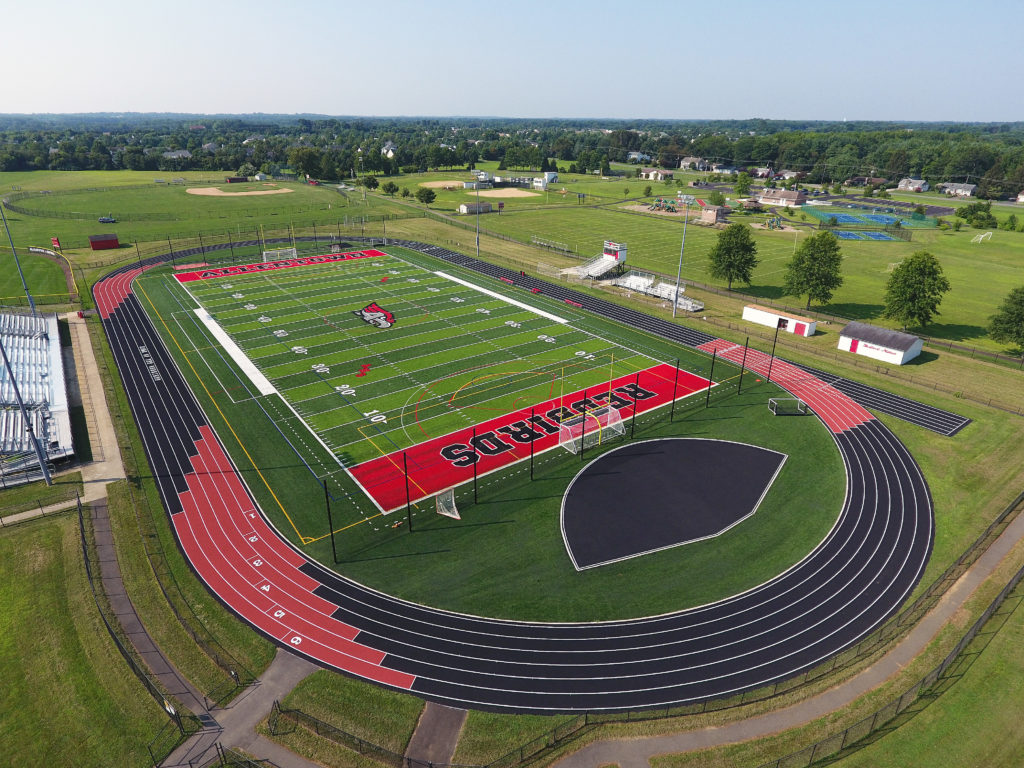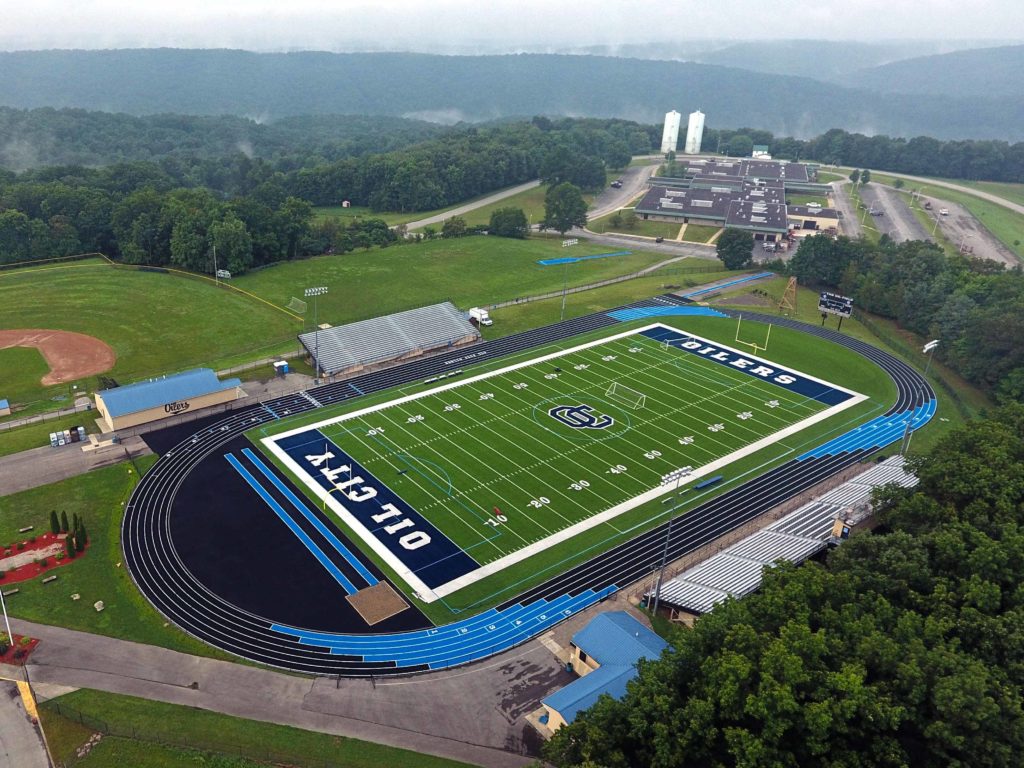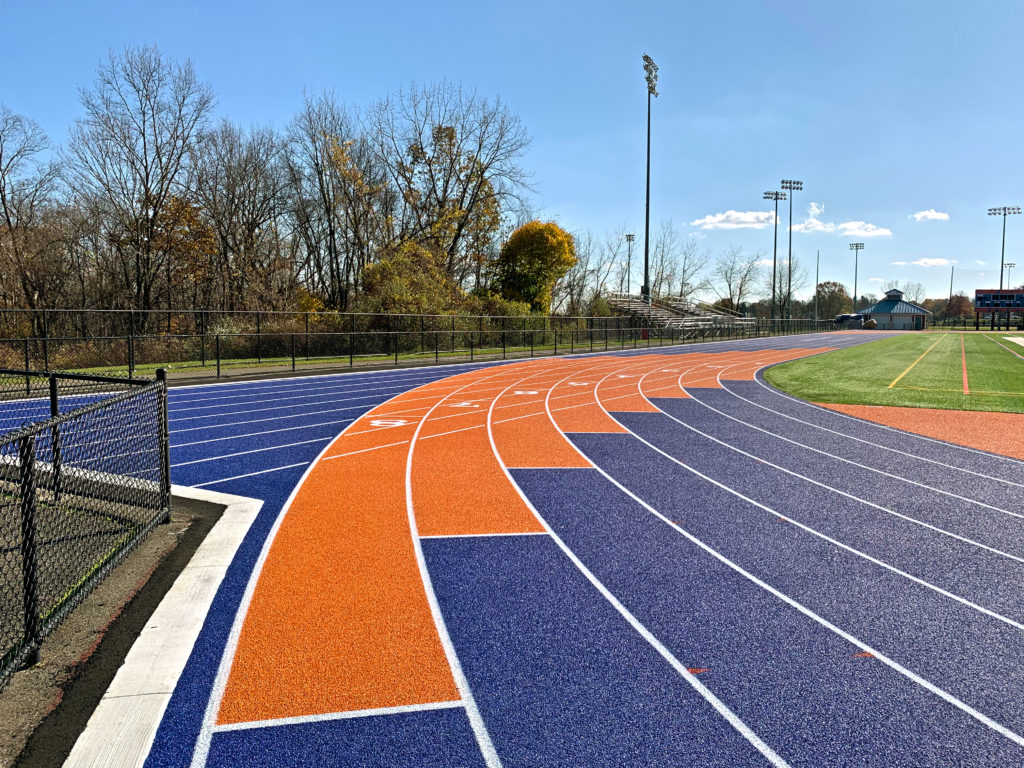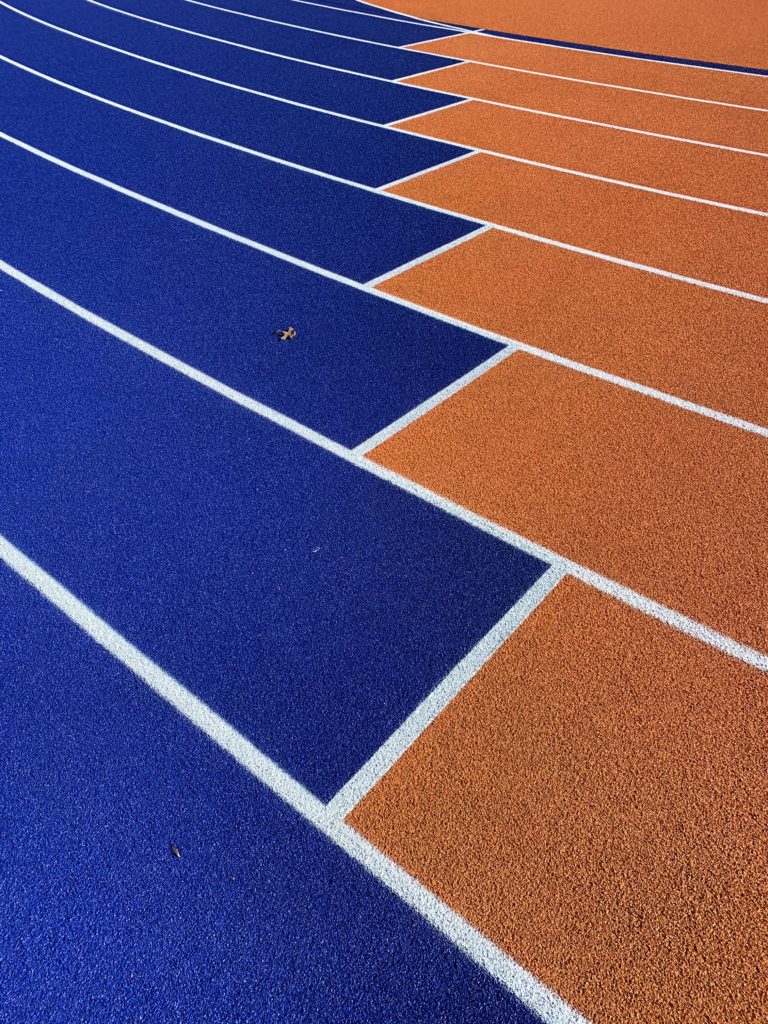
Often, we’re asked what’s new, or the latest and greatest in the world of running track surfacing. Partnering with an progressive company like Advanced Polymer Technology means there’s a lot of innovation and improvements on existing methods and products, however, a lot of advancements aren’t visible to the student athletes using the track each day.
That’s changed in recent years as colored exchange zones have become more and more popular. Now, now only can ATT Sports promise the most cutting edge materials, but also the best in terms of aesthetics as well.
The trend, which is yet to hit its crescendo, began in the early 2010s. It certainly provides an extra bit of flair for schools, but it does serve a practical purpose, giving a substantially clearer indication of the beginning and end of the exchange zones for shorter relay events.
When the NHFS and NCAA adopted new 30-meter exchange zones, the colored option added new practicality.
Are colored exchange zones right for your school? There are a few factors to consider.
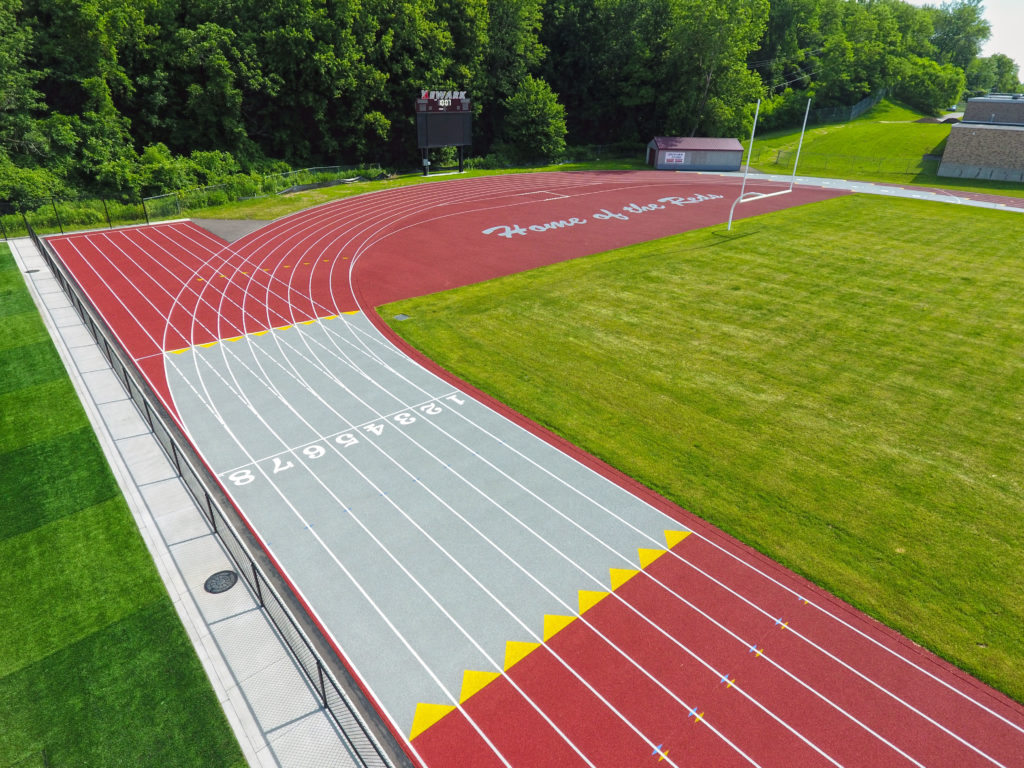
To install a track with colored exchange zones requires additional work. The exchange zones need to be precisely measured and placed before the track surfacing is installed. The color is not just paint, meaning this must be done right the first time.
Additionally, owners need to remember that colors outside red and black carry a higher cost. Adding even three exchange zones in a different color calls for more costly material.
This is also not a trend schools should jump on simply to keep up with what others are doing. First; every school district’s needs and budgets are different. Second; if the colors don’t make sense, don’t force it. Sorry to any schools out there with yellow and purple colors, but exotic colors can be very expensive and less UV stable, which means they can lose their color over time.
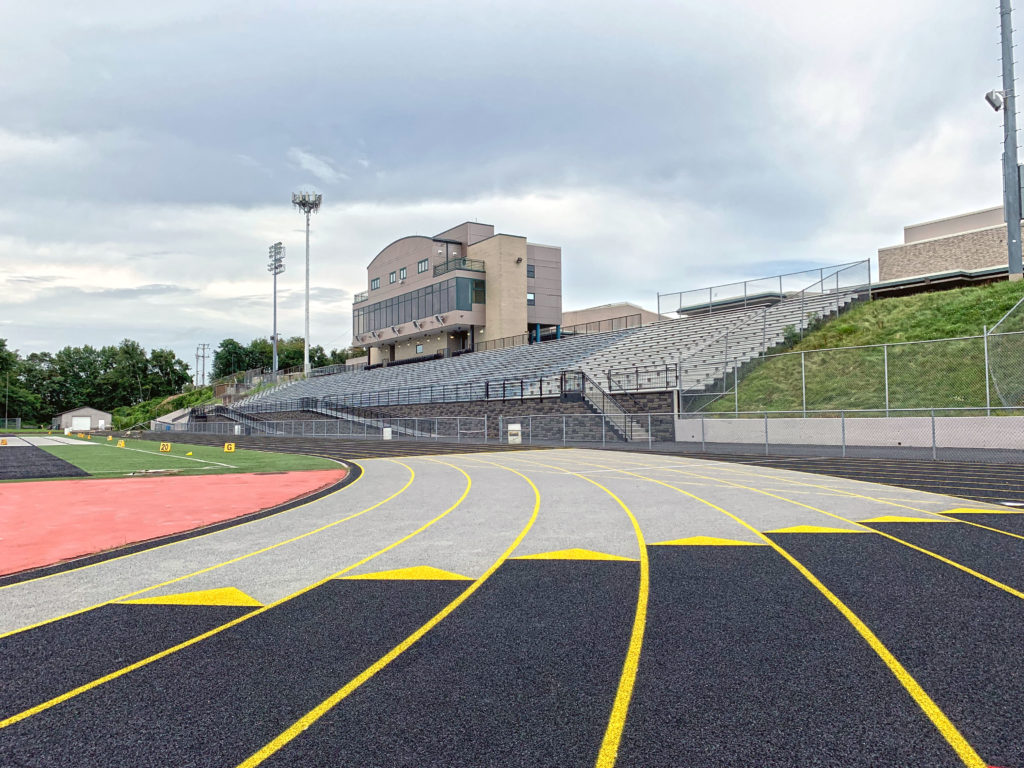
Again, there is a practical use for adding colored exchange zones to your track facility. The colored sections more clearly mark the beginning and end of the legal handoff zones for the 4×100 and 4×200 relays, in which every tenth of a second matters. Making the zones even more clear for runners can be a win all-around.
The most common design for a track with colored exchange zones includes three distinguished zones with the common finish area typically not surfaced with a different color.
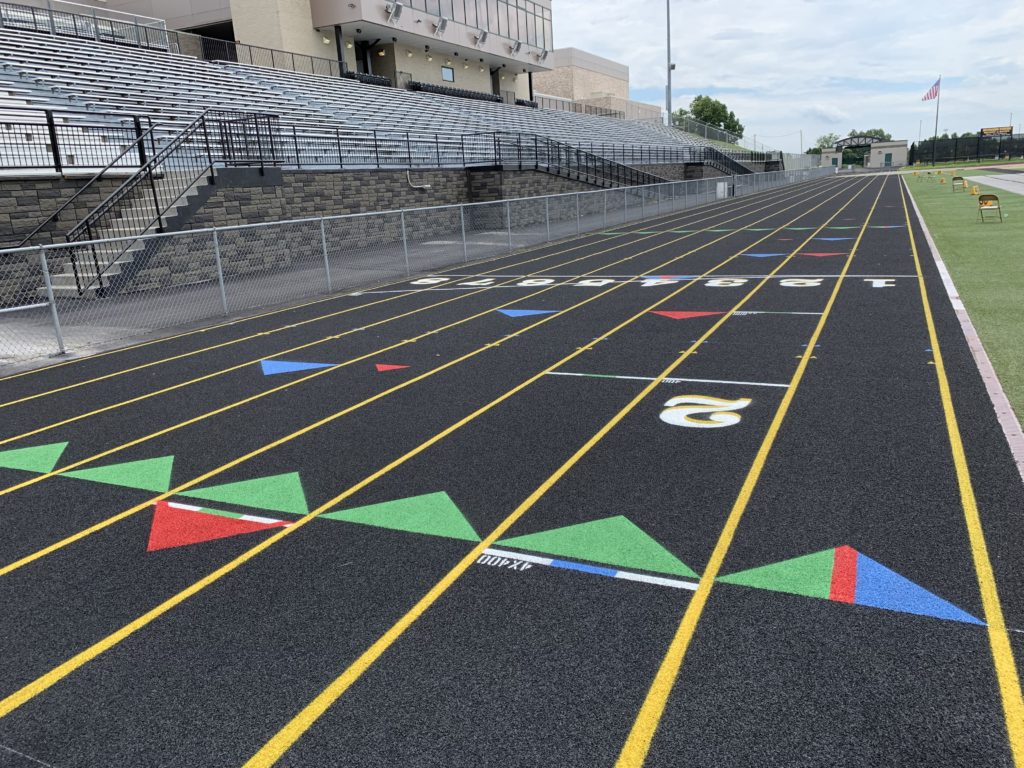
There are a few reasons for this, but the most important is to avoid any confusion with marks on the track. The common finish area is the most densely marks area of the track an often includes multiple exchange zones for different events – as many as four distinct exchange zones. Since each of those is painted in a different color, it’s best to keep this area the same color as the bulk of the oval. Runners, coaches and officials all benefit from having the common finish area as clean and clear as possible.
Curious about whether this option is right for your track? Reach out to ATT Sports today with any questions you might have.
